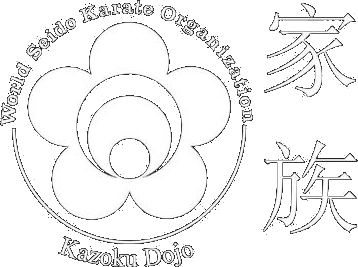

Many articles and Martial Arts related books tell us the story of karate . more of the myth originated version: .In the 6th Century BC, the famous Indian monk, Bodhidarma traveled to China, establishing self defense art in the Shaolin Temple, as part of the Buddhist education.. Although many scholars of old and today express their doubt about this mythical version, still, it holds as a possible origin story. Until the Okinawan appearance of Karate, the history versions usually consist a series of plausible guesses, using more or less of historical knowledge of the times from where artifacts, stories appear.
Okinawa is the main island in the chain of Ryuku Islands which is reaching from Japan to Taiwan. Okinawa is a small, narrow island, about 10 km wide and only about 110 km long. It is situated at the crossroads of major trading routes - east of China, south of mainland Japan and equal distance north of Taiwan. It naturally developed to be a trade center for southeastern Asia, trading with Japan, China, Indo China, Thailand, Malaysia, Borneo and the Philippines.
.Kara-Te. developed from an indigenous form of closed fist fighting which was developed in Okinawa and called .Te., or 'hand'. Three main style developed, together these were called .Tode. or .Chinese hand.. The Chinese character used to write .Tode. could also be pronounced 'kara' or .empty. thus the name Te was replaced with .kara te . jutsu. or .Chinese hand art. by the Okinawan Masters. This was later changed to karate-dō by Gichin Funakoshi who changed the Chinese character for .Chinese., to an other ideogram which primarily means .empty.. From this point in time on the term karate meant .empty hand.. The .Dō. in .karate-dō. means 'way' or 'path', and is indicative of the discipline and philosophy of karate with moral and spiritual connotations. Etymologically, the character 道 (do, dao, tao) is constructed out of two elements: 疋 (foot, and hence, to pass over, to go over, to lead through (on foot), and 首 meaning head - hair and eye - and therefore foremost. The head component has the suggestion of to lead in the sense of to give a heading is used frequently as a loan character for its verbal cognate, 導, to lead forth. Thus the character is primarily gerundive, processional, and dynamic: a leading forth. The earliest appearance of dao is in the Book of Documents [書經] in the context of cutting a channel and leading a river to prevent the overflowing of its banks. Taking the verbal dao as primary, its several derived meanings emerge rather naturally: to lead through, and hence, road, path, way, method, art, teachings; to explain, to tell, doctrines. At its most fundamental level, dao seems to denote the active project of moving ahead in the world, of forging a way forward, of road building, and by extension, to connote a pathway that has been made, and hence can be traveled. It is because of this connotation that dao is, somewhat problematically, nominalized by translating it as .The Way.
The first public demonstration of karate in Japan was in1917 by Gichin Funakoshi, at the Butoku-den in Kyoto. This, and subsequent demonstrations, greatly impressed many Japanese, including the Crown-Prince Hirohito, who was very enthusiastic about the Okinawan art. In 1922, Dr. Jano Kano, founder of the Japanese art of Judo, invited Funakoshi to demonstrate at the famous Kodokan Dojo and to remain in Japan to teach karate. This sponsorship was instrumental in establishing a base for karate in Japan. As an Okinawan .peasant art,. karate would have been scorned by the Japanese without the backing of so formidable a martial arts master.
© 2019 Seido Karate Kazoku Dojo
Web Hosting kindly provided by
Netsell ISP